Gregg D. Merksamer: “Remembering the 1908 Briarcliff Trophy Race”
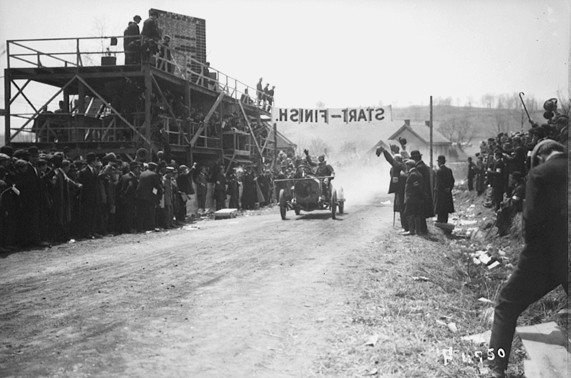
The most exciting and spectacular automobile race ever held in Westchester County is considered the 1908 Briarcliff Trophy Race. Run six months before the 1908 Vanderbilt Cup Race, the Briarcliff race attracted skilled drivers and over 100,000 spectators along the 32.4-mile course. Despite this apparent success, it was never repeated.
In celebration of the race's centennial in 2008, author and photographer Gregg D. Merksamer extensively researched this race. He has forwarded his 2008 article and these photos of the several of the drivers who also participated in the Vanderbilt Cup Races and its associated sweepstakes.
Enjoy,
Howard Kroplick
Remember the 1908 Briarcliff Trophy on its Centennial
By Gregg D. Merksamer- 2008
Dashing through the wooded valleys and rural villages of Westchester County, N.Y. on Friday, April 24th, 1908, the Briarcliff Trophy may have been the most ambitious and exciting auto race ever staged in what would later develop into New York City’s northern suburbs. Inspired, incredibly, by an illustrated Historical Society blanket hung up in the window of a local delicatessen, I started researching the event when my wife Lisa & I lived in Briarcliff Manor as newlyweds from 1994-97. Held just once, it seemed shameful that this action-packed epic had become a largely-forgotten footnote to a remarkable year that also saw Henry Ford debut his Model T, General Motors founded by Billy Durant and American-made machines from Thomas and Locomobile respectively win the New York-to-Paris and Vanderbilt Cup contests.
Anyone with a detailed Hagstrom road atlas - the “Bible” of Westchester County deliverymen and taxi drivers - can still follow the 1908 Briarcliff route fairly easily and will find it delectably scenic, especially on the less congested upper sections. Heading northeast from the starting line in the Village of Briarcliff Manor, the 32.4-mile circuit (lapped eight times to total 259 miles) followed what are now North State Road and NY 100 up to the New Croton Reservoir, where it turned right down what are today Croton Lake and Pines Bridge Roads. After entering the village of Mount Kisco, where a motorcycle-escorted, 2.8 mile long Control Zone with a 20 mph limit made the official mileage 29.6 miles per lap, the course covered its five fastest and straightest miles on what is now NY 128. Beyond Armonk, the racers followed the east shore of the Kensico Reservoir to Valhalla, headed west on Grasslands Road to the sharp northbound curve at Eastview, and returned to Briarcliff using a much-changed corridor currently occupied by the Saw Mill and Taconic State Parkways. NY 448, running parallel through the Rockefeller family estates at Pocantico Hills, gives a good idea of what this home stretch might have looked like a Century ago.
As THE AUTOMOBILE called the Briarcliff course a “tortuous circuit of the crumpled-up paper type, with impossible bends and turns, each one with its pitfall of narrow, creaky bridge, or its menacing stone wall, and with scarcely a quarter mile straight, or a half dozen places where a competitor could safely be passed at speed,” nerve was as necessary as talent for the twenty-two participating drivers. Louis Strang, Hugh Harding and Al Poole piloted Italian-built Isotta-Fraschinis, while the Cleveland-based Stearns concern fielded Frank Leland, Guy Vaughan and cigar-chomping, crowd-pleasing dirt track legend Barney Oldfield. Ralph DePalma, the 1915 Indianapolis 500 winner, got promoted from riding mechanic to driver after Al Campbell, blinded by dust in his violet Allen-Kingston, broke his jaw after missing the bridge at Armonk during practice and somersaulting into the creek below. The E.R. Thomas Company even recalled Montague Roberts from Cheyenne, Wyoming, where he had been leading the New York-to-Paris Race that had left Times Square on Lincoln’s Birthday.
Less than one lap after the drivers, individually departing Briarcliff Manor at one-minute intervals, began racing at 5:07 am, Louis Strang in the bright red #4 Isotta had emerged as the leader. Having gone to school in Scarborough, barely two miles from the starting line, he told reporters afterwards that “my perfect knowledge of the road undoubtedly gave me a great advantage over the other men ahead of me, who had to feel their way through the mist while I drove wide open.” With his #2 Fiat cheered on by the immigrant Italian stonecutters who had completed the nearby Croton Dam the year before, Emanuel Cedrino stood out as Strang’s most determined opponent with the fastest final lap of any Briarcliff competitor, timed at 36 minutes and 48 & 3/5 sec¬onds for a 48.24 mph average. Strang was still the first across the finish line at 11:40 am, encoring his Savannah victory of the month before with an elapsed time of 5 hours, 14 minutes, 13 and 1/5 seconds and a 45.22 mph average over 236.8 miles of actual racing.
Though eighteen out of twenty-two starters were still rolling at race’s end - Cedrino’s Fiat and Guy Vaughan’s Stearns finished second and third - THE AUTOMOBILE asserted that “not half as many people saw the Briarcliff Race as witnessed the 1906 struggle for the Vanderbilt Cup (on Long Island),” while the Ossining, NY DEMOCRATIC REGISTER seethed that State Engineer Frederick Skene (who came by two days before the start and demanded $200 security for each mile of the course, even though the promoters had already upgraded roads at their expense) “did so much talking about bonds, money, and stopping the race, thousands stayed away.” It wasn’t until 1934 that the streets of Briarcliff Manor witnessed another, far more modest 100-mile contest staged by the Automobile Racing Club of America on a 3.3 mile loop entirely within the village limits.
GREGG D. MERKSAMER, now living in Warwick, NY, recently discovered that the George Eastman House has posted numerous Nathan Lazernick photos from the 1908 Briarcliff Trophy race online. In order to encourage others to honor the Briarcliff competitors and explore some of Westchester County’s most scenic highways, he is also happy to transmit turn-by-turn directions detailing the race route and its mileages to anyone who e-mails [email protected].
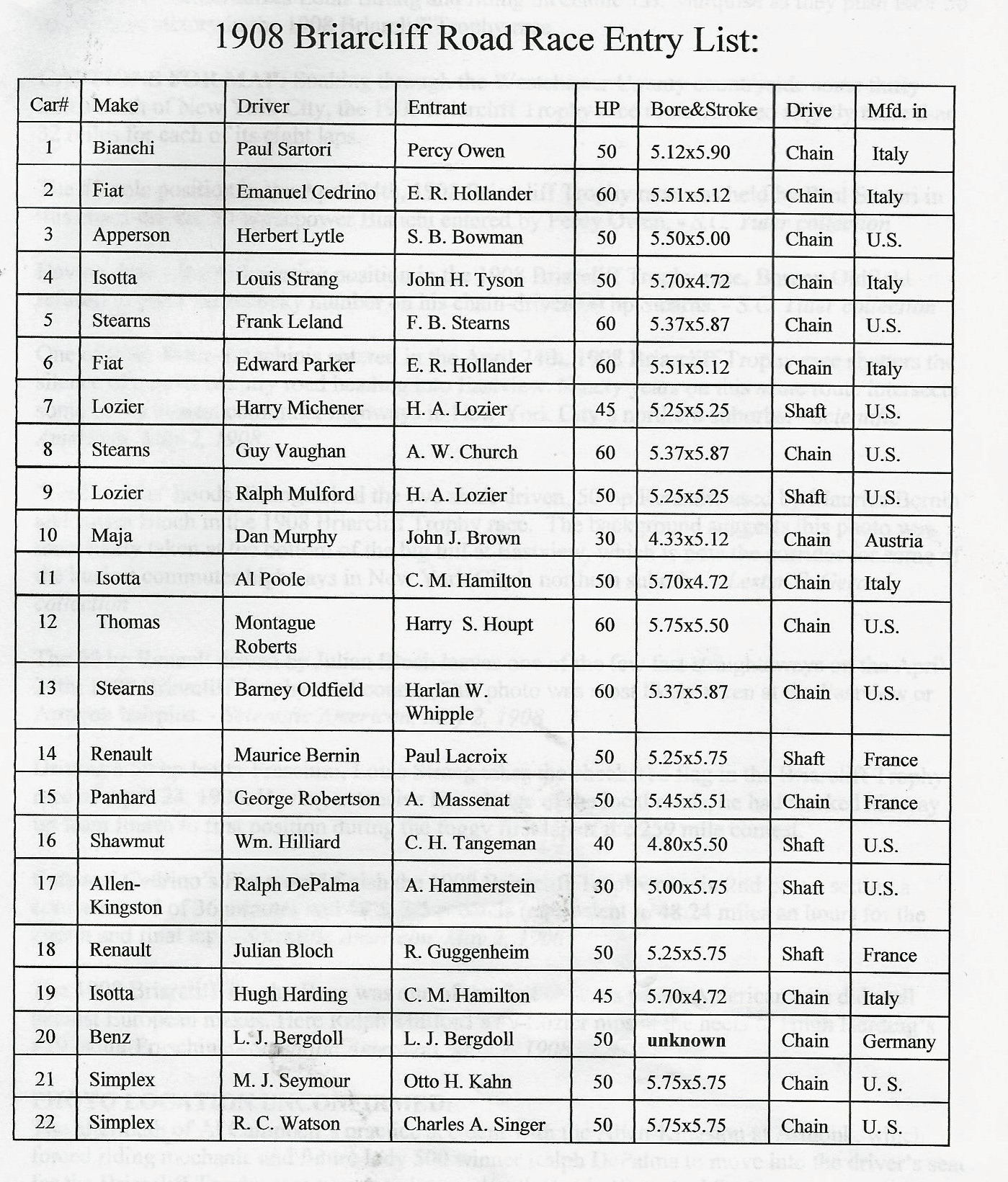
Thirteen of the 22 drivers also drove in the Vanderbilt Cup Races or its associated sweepstakes inluding three winners; George Robertson (1908), Ralph Mulford (1911) and Ralph DePalma (1912 and 1914).
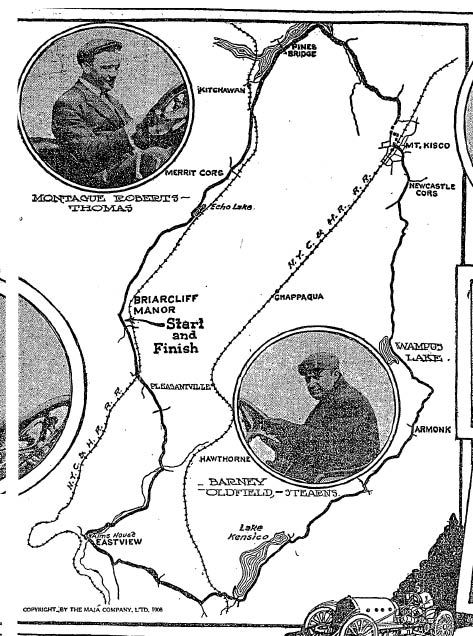
New York Times, April 12, 1908
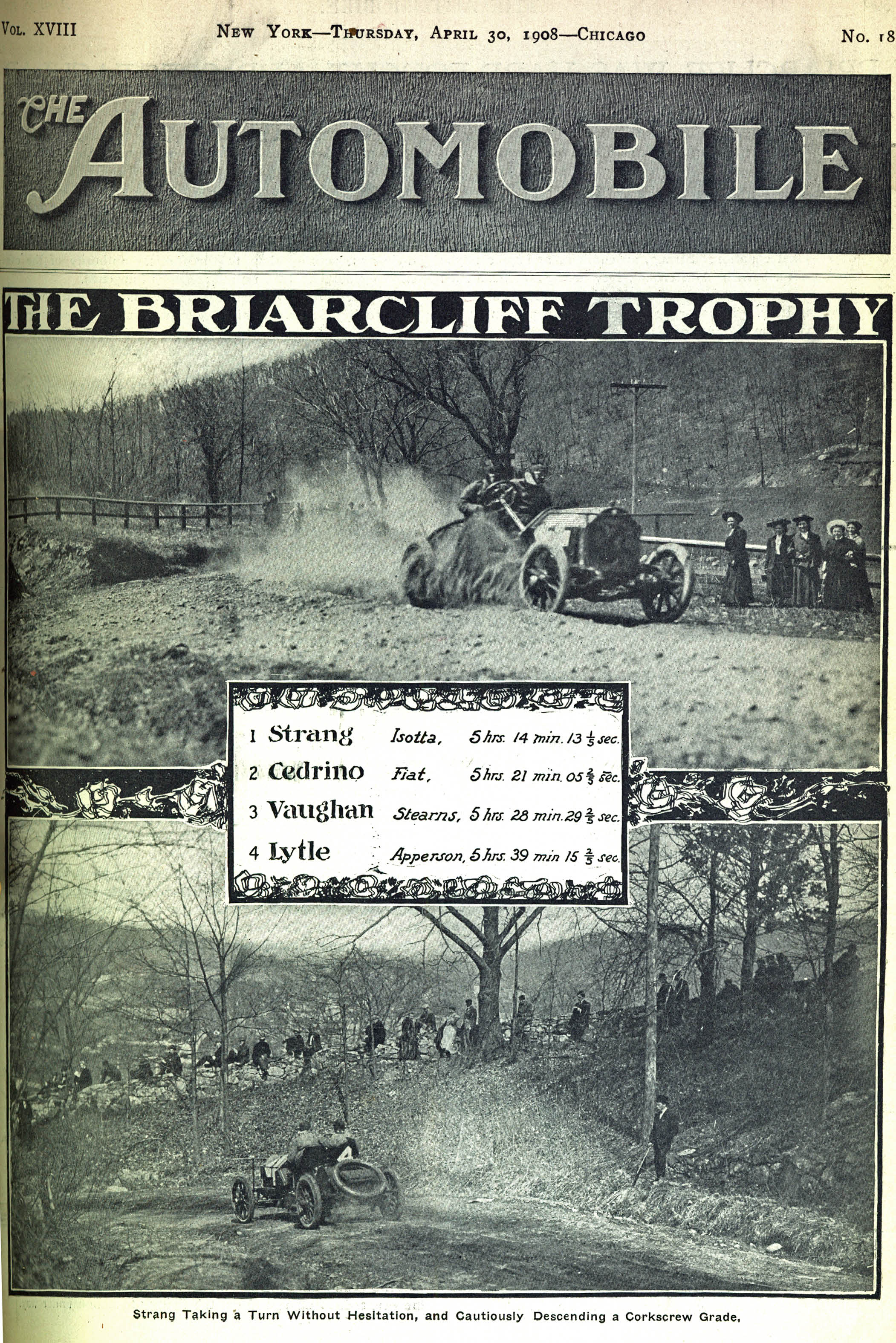
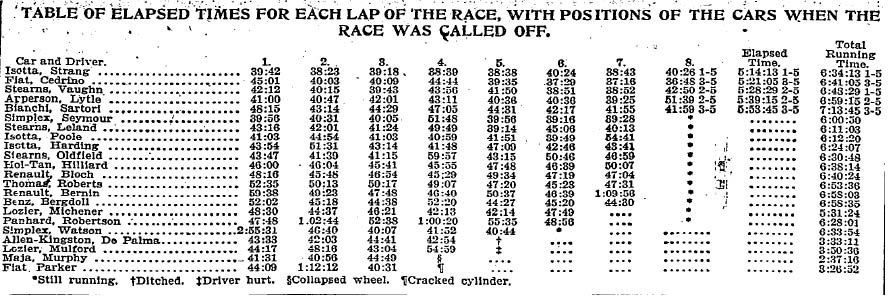
New York Times, April 25, 1908
Drivers who raced in the 1908 Briarcliff Trophy Race and the Vanderbilt Cup Races and/or Sweepstakes
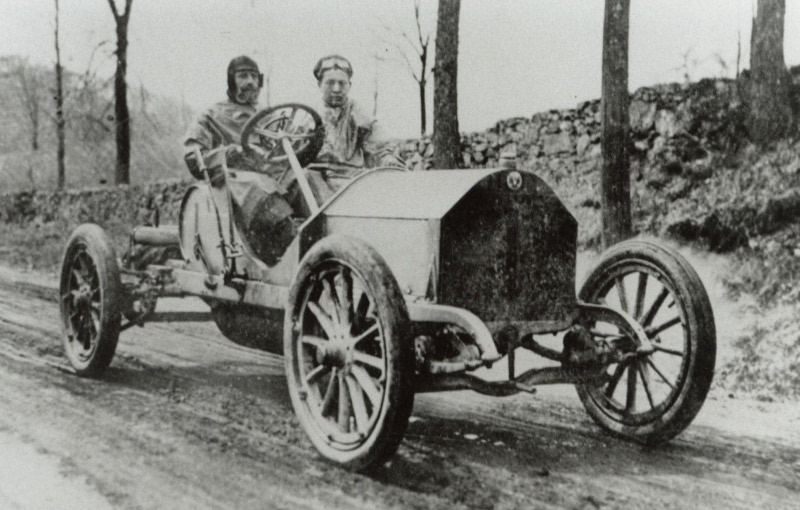
The pole position was held by Paul Sartori in this chain-driven 50 HP Bianchi entered by Percy Owen, the president of the Liberty Motor Car Company.
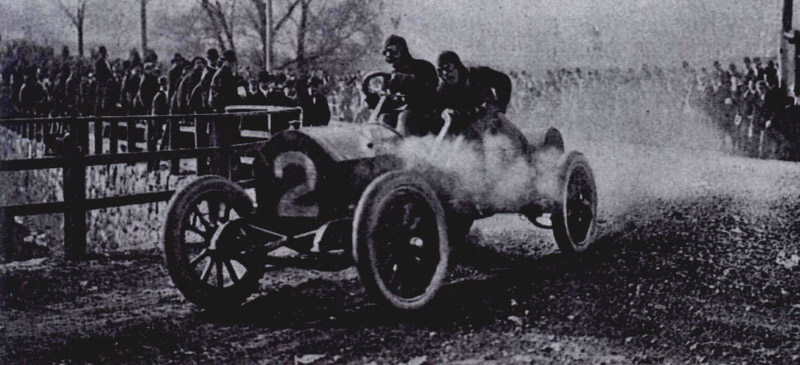
Emanuel Cedrino's #2 FIAT would finish in second place setting a course record of 48.24 mph for the eighth and final lap.
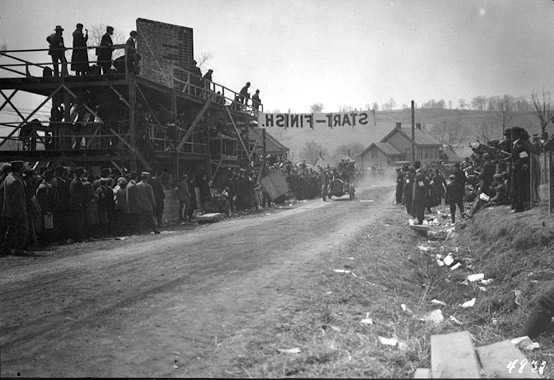
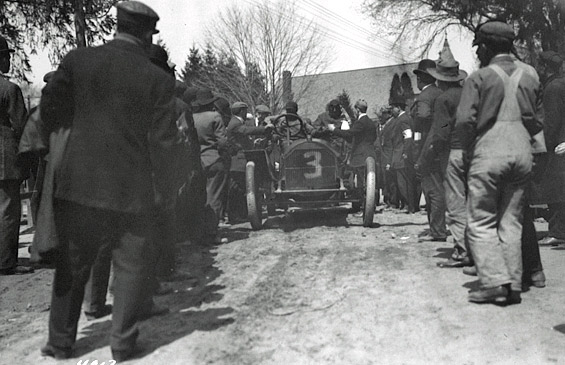
A blown right rear tire and three burned-out spark plugs cost Herb Lytle’s #3 Apperson his second place position on the last half of the last lap. Back in Briarcliff, he nonetheless received a warm reception after finishing in fourth place overall with a time of five hours, 39 minutes and 15 and 2/5 seconds. - Nathan Lazernick photo, George Eastman House
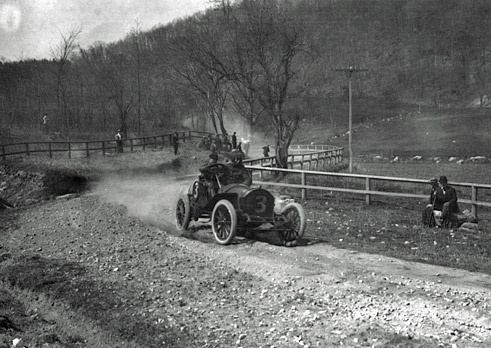

Driving a 50 HP #4 Isotta-Fraschini, Lewis (Louis) Strang took the checkered flag for first place. Having extensive knowledge of the local roads, he had worked this way up from fourth place to first during the foggy first lap of the 256-mile contest.
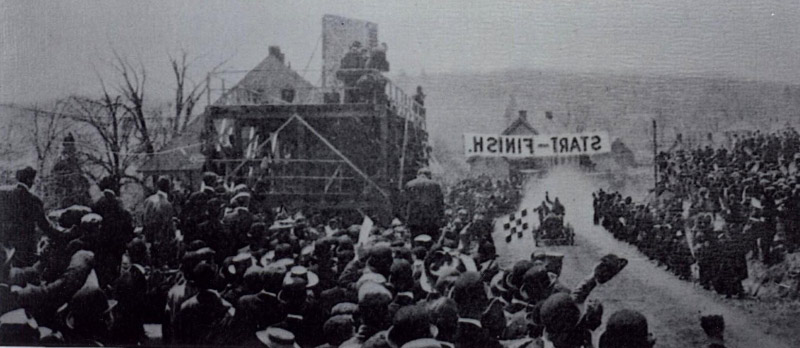
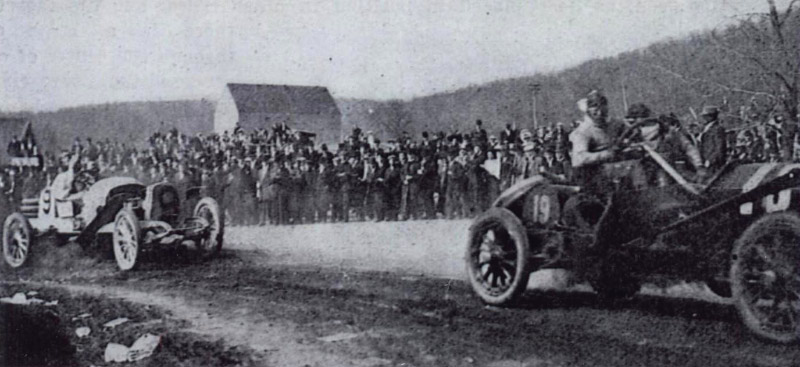
The 1908 Briarcliff Trophy Race was one of the first contests where American cars did well against European makes. Here's Ralph Mulford's #9 Lozier nips at the heels of Hugh Harding's #19 Isotta.
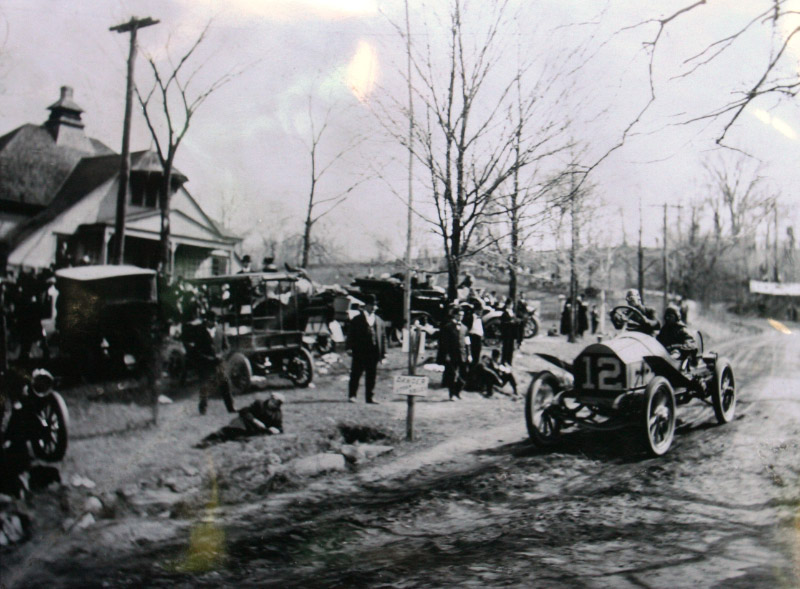
Montague Roberts was leading the epic New York-to-Paris Race when he was recalled from Cheyenne, Wyoming to drive the #12 Thomas in the 1908 Briarcliff Trophy. His 13th place finish wasn’t one of his best. - Nathan Lazarnick photo, George Eastman House
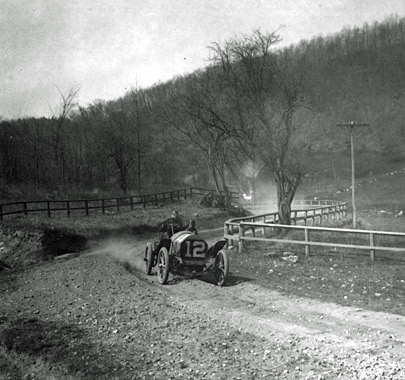
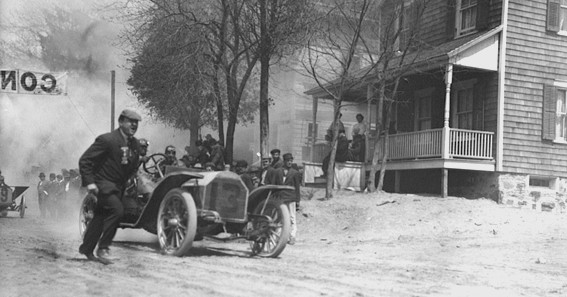
Barney Oldfield may now be the best-known 1908 Briarcliff racer, but his Stearns certainly lived up to its # 13 entry number’s unlucky aura after to a near-collision with a train at Kitchawan and a clogged fuel line that left him stranded on the big hill beyond Valhalla.
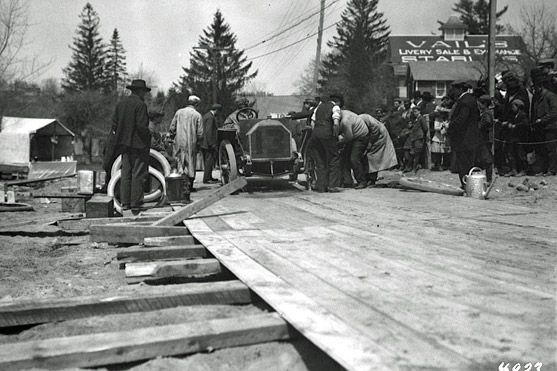
Oldfield nonetheless finished in 10th place out of 22 starters. Note here how his pit area was covered with planking to ensure a hard, smooth working surface. - Nathan Lazarnick photo, George Eastman House
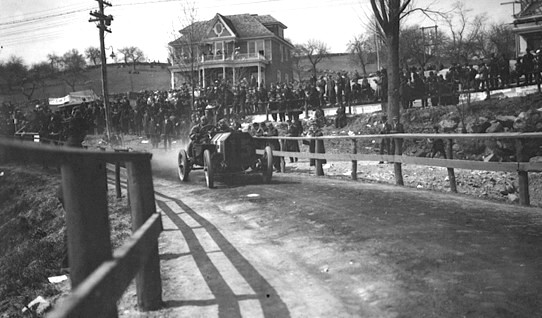
George Robertson driving the #15 Panhard.
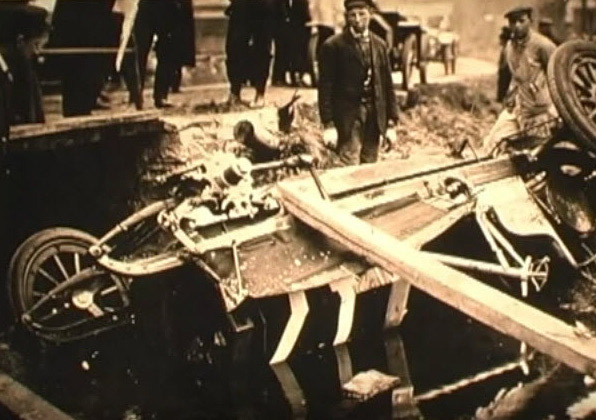
After this practice accident with Al Campbell's #17 Allen-Kingston at Armonk, mechanician and future Vanderbilt Cup Race and Indy 500 winner Ralph DePalma moved into the driver's seat.

The Isotta Team (left to right: Hugh Harding, Lewis Strang, and Al Poole)













Comments
Bravo Greg! Great article and super research!!!!!Thanks Howard for posting this.
Thank you for the excellent article and meticulous research. The 1908 Briarcliff Trophy Race deserves to be remembered. Great to know about the Eastman resource.
Howard Kroplick & http://www.vanderbiltcupraces.com This is one of the most informative site on American Automotive Racing History. Thanks to all for Keeping American Automotive Racing History Alive! Barney Oldfield, Master Driver of the World & America’s Legendary Speed King’s Great Nephew.